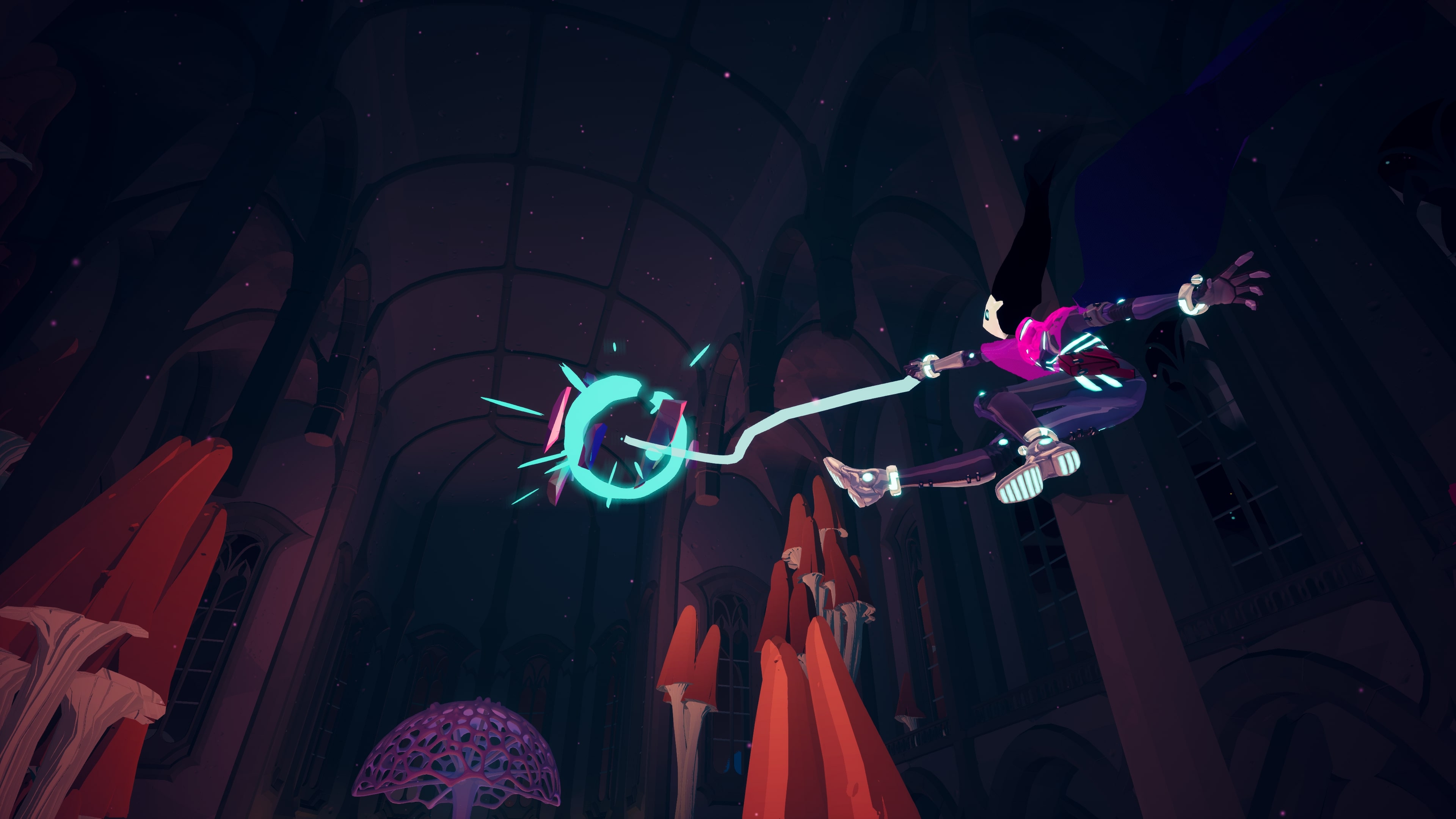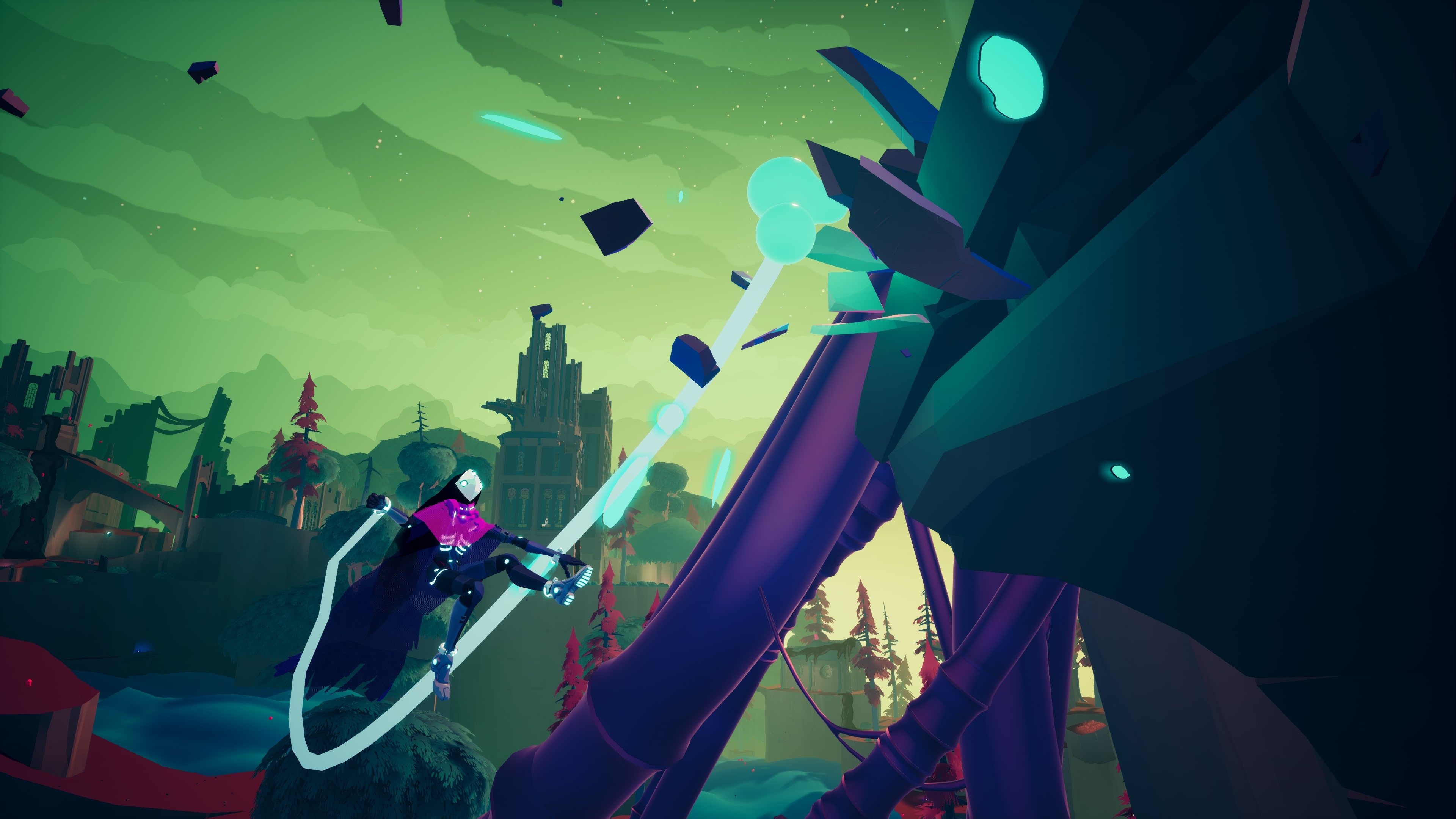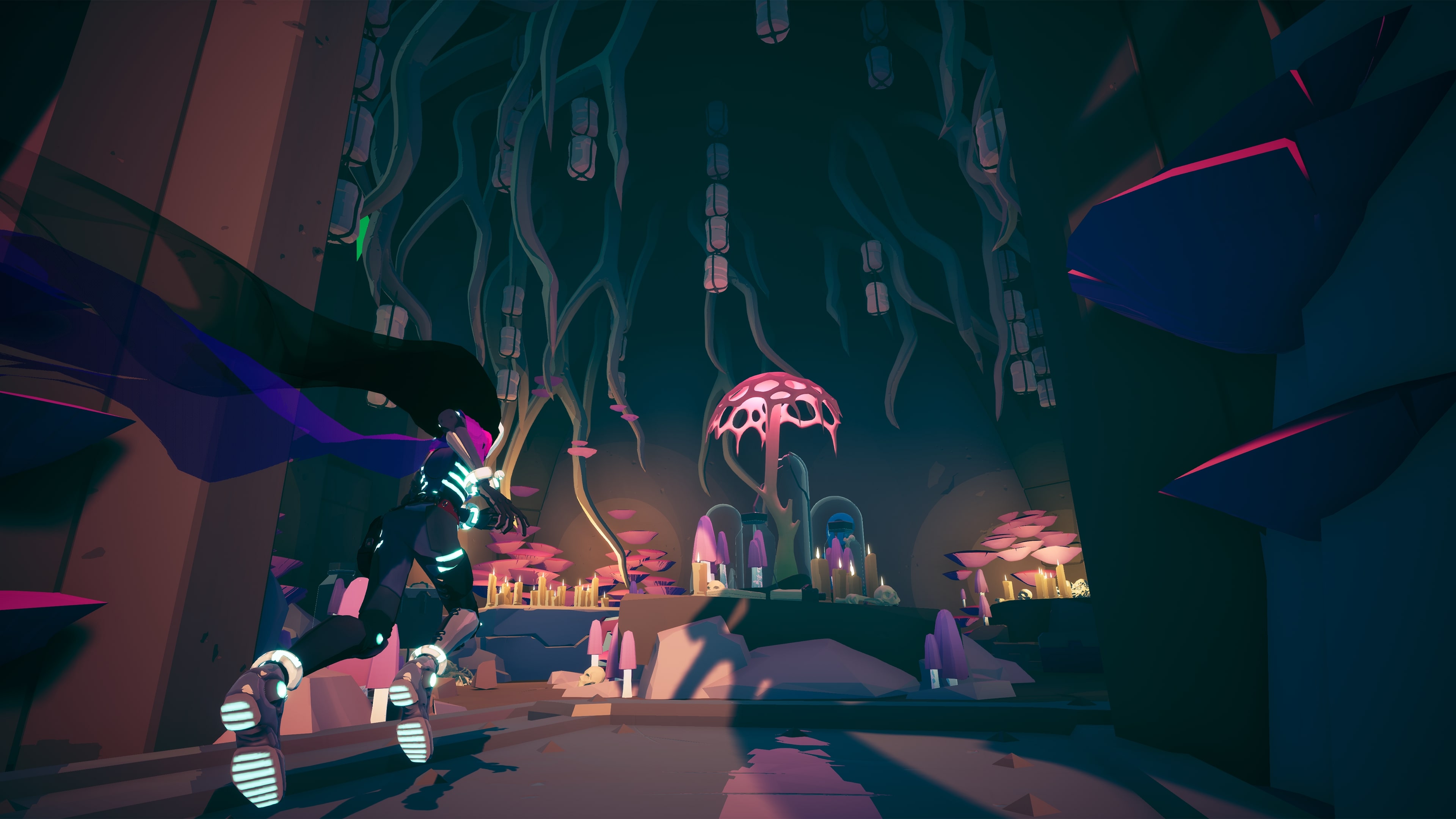Solar Ash lives up to its "dumb elevator pitch" of Super Mario Galaxy meets Shadow of the Colossus
How Heart Machine turned cloud skating into a heart-pounding adventure

If I can be selfish for a minute, Solar Ash is exactly what I wanted Heart Machine, creators of the lovely Hyper Light Drifter, to make next. And not just because I'm gravitationally drawn to innovative movement systems like the cloud skating of Solar Ash's main character Rei. Solar Ash has given the studio more space to build creative challenges and flex its atmospheric world design – two elements that helped define Hyper Light Drifter. But yeah, also because the movement absolutely whips, so much so that it actually lives up to what director Alx Preston calls his "dumb elevator pitch" of Super Mario Galaxy crossed with Shadow of the Colossus, with a bit of Jet Set Radio thrown in for good measure.
"It was many years ago now, that was kind of a dumb thing that I said early on for the pitch when I was shopping it around to different publishers," Preston explains. "Way back in 2015 I guess was when I was probably thinking about it this way. [It's changed] in many, many ways, too many to dig into in any detail. But I will say, the original pitch, if you look back at the dek I put together, it hits all the marks that it intended to. Certainly the path was long and winding, and certainly challenging, but it hits the tentpole ideas there, and the core philosophies were maintained even after some pretty big revisions on different things we tried throughout production."

Solar Ash is a third-person open-world action game set inside a black hole called the Ultravoid. Thematically, it's about escaping your pain, and mechanically it's about going real fast, real slick-like. Combat is intentionally minimized; occasionally you dish out some air slaps or stab weak points, but the core of the game is mastering Rei's movement. "Cloud skating" is a perfect description of it. Our main character's wispy form glides effortlessly over the game's terrain like an olympic figure skater. In the preview I'm watching, she nimbly scales and slides down hills of a lovely green dotted with tiny, waving mushrooms – just one of the many sprawling biomes you'll encounter in Solar Ash in between arcane crypts and dungeons.
It's good ideas and bad ideas and mediocre ideas, and you try a lot of things and throw out the ones you don't like or don't fit, and you keep the stuff that works.
Alx Preston
The presentation is perfect. Rei kicks her legs back harder as you build up speed, propelling herself forward and leaving ethereal trails of light in her wake, like you've cranked up the exposure on the camera. She throws her arms out as if to grab the air as she snakes over the landscape. She jumps, grapples, jumps again – ooh, a double jump – and lands perfectly every time. Rei moves explosively but cleanly, reinforcing the pure, locomotive thrill of Solar Ash. Yes, we've a great, big world to see, filled with fully voiced characters and ancient secrets, and framed by a thus far melancholy narrative. But we've also got a great, big world to traverse, and this is a rare game where just holding forward on your controller or keyboard is a delight.
We have a surprising bit of tech to thank for Rei's fluidity. Preston says it's not his area of expertise and some details even go a bit over his head, so I won't even try to explain what's going on under the hood, but it's basically a volumetric rendering trick called SDF. Preston says Heart Machine was partly inspired by the soft, reactive surfaces of Claybook, and the studio spent quite some time getting SDF to play nicely in its world, all while wrangling the creative demands of moving from 2D to 3D after Hyper Light Drifter. Interestingly enough, this same technique apparently powers a lot of the stuff in Dreams, Media Molecule's tireless game maker. Applied from a different angle, it's become an indispensable part of Solar Ash.
Once more, still reeling

"When you're focused on a character's movement and traversal as your primary means for gameplay, you'll try a lot of different stuff for it," Preston says. "We had wall dashes and things like that. They're cool, sure, and fitting thematically, but what are they really giving us that other stuff isn't giving us? What is it costing us?"
"You just keep layering," he adds, explaining how movement can become the central pillar for a game. "How do you do that? It's good ideas and bad ideas and mediocre ideas, and you try a lot of things and throw out the ones you don't like or don't fit, and you keep the stuff that works. There's dozens of different avenues to go down. Eventually you start to lock in how it feels to move around in this world, and the scale and general composition that work for the character control. Then it becomes more obvious the way we can plus-one that or formulate ideas around that."
Weekly digests, tales from the communities you love, and more
Solar Ash has stretched its movement as far as it can go. My preview showcased a medley of time trials which force you to move in exciting ways and under different conditions. The experience can be further modified by difficulty modes ranging from forgiving to speedrun-grade, as well as unlockable suits which tweak Rei's abilities. Grab some color-coded spores and bring them to an urn before they fizzle out. Reveal a weak point and clamber over to it before it's closed off. Press this, grapple that, climb this, and grind that to clear a gap. It's a concert of puzzles and momentum. Then you have the simpler things: nab all this red plasma, an essential upgrade material, as you descend this hill. And then there are the bosses, which crank things up significantly.

The boss in my preview is a big mass of black fuzziness and bone, skittering around a distinctly Mario Galaxy planetoid and moving not unlike an insect. Bafflingly, Preston says this towering bug-thing is at least 10 times smaller than the other bosses. Now we're getting to the Shadow of the Colossus influence: climbing these monstrosities and darting around their exoskeletons stabbing weak points. Hit windows are tight and bosses do everything they can to knock you off; a single mistake can put you back on the ground and in easy reach of these giants. Here, too, verticality is everything.
My preview ends shortly after this boss is taken down, and to my surprise, defeating this titan knocks a chunk off our maximum health. I followed up with Preston to make sure I wasn't mistaken, and he confirmed that, yep, the bosses do take a piece of you with them. You can replenish your health by spending collected plasma at the kind guide who follows you around, and this provides constant motivation to explore and collect. Just as importantly, it reinforces the roots of Solar Ash. "This journey has a cost," Preston says. "It takes a toll. Your ambitions can take a toll."
Solar Ash is out on PS4, PS5, and PC (via the Epic Games Store) October 26.

Austin has been a game journalist for 12 years, having freelanced for the likes of PC Gamer, Eurogamer, IGN, Sports Illustrated, and more while finishing his journalism degree. He's been with GamesRadar+ since 2019. They've yet to realize his position is a cover for his career-spanning Destiny column, and he's kept the ruse going with a lot of news and the occasional feature, all while playing as many roguelikes as possible.


